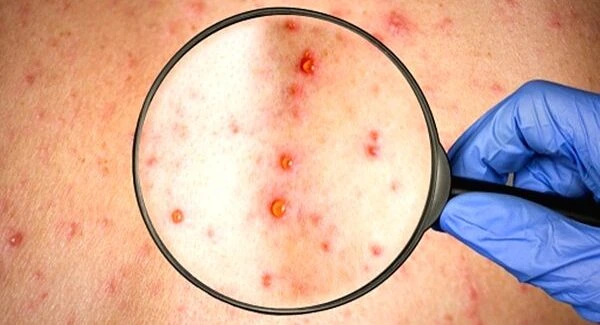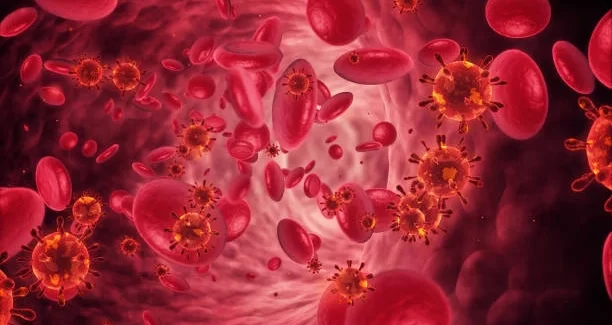Preventing and Treating White Spots on Your Face: Expert Advice and Precautions

Posted Date: March 22nd, 2023
White spots on the face can be a frustrating and embarrassing skin concern. While they are typically innocuous, they can cause reluctance and may try and influence an individual’s confidence. Luckily there are numerous ways of forestalling and treating white spots on the face. Expert advice and precautions can help individuals manage and eliminate white spots while also avoiding future outbreaks. By understanding the reasons for white spots on the face individuals can avoid potential risk to keep them from happening in any case. Additionally there are numerous treatments available, ranging from over-the-counter creams to professional medical procedures. With just enough information and the right methodology, people can accomplish clear, solid looking skin and feel more sure about their appearance.
In This Article
- What Causes White Spots on the Face?
- Different Types of White Spots on the Face
- How to Prevent White Spots on the Face
- Expert Tips for Treating White Spots on the Face
- Home Remedies for White Spots on the Face
- When to See a Doctor for White Spots on the Face
- Living with and Managing White Spots on the Face.
What Causes White Spots on the Face?
White spots on the face can have a variety of causes. One of the most common causes is a fungal infection called tinea versicolor. This contamination is brought about by an abundance of yeast on the skin and can be exacerbated by variables like warm climate, over the top perspiring, and slick skin. One more possible reason for white spots on the face is vitiligo which is a condition where the resistant framework goes after the melanin-creating cells in the skin. This can result in patches of white skin on the face and other parts of the body. Other possible causes of white spots on the face include eczema, psoriasis, and other skin conditions. Certain medications such as corticosteroids and immunosuppressant, can also cause white spots to appear on the skin as a side effect. It is essential to talk with a medical care proficient to decide the basic reason for white spots on the face and to foster a fitting therapy plan.
Different Types of White Spots on the Face
There are several different types of white spots that can appear on the face, each with their own causes and characteristics.
1. Milia: One type of white spot is called milia. These are small, hard, white bumps that often appear around the eyes, nose, and cheeks. They are brought about by dead skin cells becoming caught in the hair follicles which can make a development of keratin. Milia can sometimes go away on their own, but if they persist, a dermatologist can remove them with a minor procedure.
2. Seborrheic Keratosis: Another type of white spot is called seborrheic keratosis. These are raised, waxy, white or light brown spots that can appear on the face and other parts of the body as people age. While they are usually harmless, they can sometimes be mistaken for skin cancer, so it’s important to have them evaluated by a dermatologist.
3. Vitiligo White patches of skin caused by vitiligo can also appear on the face. These patches are caused by a loss of pigment-producing cells in the skin, and can range in size from small spots to larger patches. Vitiligo can be a chronic condition, and treatment options vary depending on the severity of the condition and the patient’s individual needs.
4. Pimples or acne: Whiteheads are a common form of acne that appears as small white or yellow bumps on the face.
5. Sun damage: Sun exposure can cause white spots on the face, particularly on areas that are frequently exposed to the sun such as the forehead, cheeks, and nose.
6. Fungal infections: Certain fungal infections such as tinea versicolor, can cause white spots on the face.
7. Allergic reaction: Some people may develop white spots on their face as an allergic reaction to certain substances such as skincare products.
8. Tinea versicolor: Finally, white spots caused by an overgrowth of yeast on the skin which can create lighter or darker patches of skin. These patches are usually round or oval in shape and can be scaly or itchy. Tinea versicolor can be treated with antifungal medications or topical creams, but recurrence is common.
How to Prevent White Spots on the Face
Preventing white spots on the face largely depends on the underlying cause. However there are some general precautions that people can take to reduce their risk of developing white spots on their face:
1. Protect your skin from the sun: Exposure to UV radiation can damage the skin and increase the risk of developing white spots. Use a broad-spectrum sunscreen with an SPF of at least 30 and wear a hat and protective clothing when spending time outdoors.
2. Keep your skin clean: Washing your face twice a day can help remove dead skin cells and other debris that can clog pores and contribute to the development of white spots.
3. Avoid oily or greasy products: Using oil-based skin care products can contribute to the development of white spots on the face. Look for non-comedogenic products that won’t clog pores.
4. Manage your stress: Stress can contribute to a variety of skin problems, including white spots. Practice stress-reducing techniques such as meditation or yoga to help keep stress levels in check.
5. Maintain a healthy diet: Eating a balanced diet that includes plenty of fruits, vegetables, and lean proteins can help support healthy skin and reduce the risk of developing white spots.
6. Don’t pick at your skin: Picking at blemishes or white spots on the face can cause further irritation and lead to scarring or discoloration.
If you have a medical condition that contributes to the development of white spots on your face it’s important to follow the treatment plan recommended by your healthcare provider to help manage and prevent outbreaks.
Expert Tips for Treating White Spots on the Face
Treating white spots on the face will depend on the underlying cause. However there are some expert tips that can help manage and treat white spots on the face:
1. Consult with a dermatologist: If you are experiencing persistent white spots on your face it’s important to consult with a dermatologist to determine the underlying cause and develop an appropriate treatment plan.
2. Use topical treatments: Topical treatments such as retinoids, topical steroids, and topical antifungals can be effective in treating white spots caused by various skin conditions.
3. Consider light therapy: Light therapy such as phototherapy or laser therapy, can be effective in treating white spots caused by vitiligo and other skin conditions.
4. Practice good skin hygiene: Keeping your skin clean and moisturized can help prevent further irritation and manage symptoms.
5. Manage underlying medical conditions: If your white spots are caused by an underlying medical condition such as an autoimmune disorder it’s important to manage the condition with the help of a healthcare professional.
6. Avoid picking at or scratching white spots: Picking at or scratching white spots can cause further irritation and make the condition worse.
7. Use makeup to camouflage: If you feel self-conscious about white spots on your face, consider using makeup to help camouflage the affected areas.
Remember that treating white spots on the face is a process that takes time and patience. With the help of a healthcare professional and by following expert tips, you can manage symptoms and achieve healthy-looking skin.
Home Remedies for White Spots on the Face
While it’s important to consult with a dermatologist for proper diagnosis and treatment, some people may also want to try some home remedies for white spots on the face. It’s important to note that these remedies may not work for everyone, and some may even worsen the condition. Here are some home remedies that have been suggested for treating white spots on the face:
Apple cider vinegar: Apple cider vinegar has antifungal properties and can help to balance the pH of the skin. Mix equal portions of apple cider vinegar with water, and apply it to the affected areas with the help of cotton ball.
Tea tree oil: Tea tree oil has antifungal and antibacterial properties which can help to treat white spots caused by fungal infections. Mix a few drops of tea tree oil with a carrier oil like coconut oil or olive oil, and apply it to the affected area.
Aloe vera: Aloe vera has anti-inflammatory and antimicrobial properties and can help soothe and heal the skin. Apply fresh aloe vera gel to the affected area and leave it on for 10-15 minutes before rinsing off with water.
Turmeric: Turmeric has anti-inflammatory and antioxidant properties and can help to reduce inflammation and promote healing. Mix turmeric powder with water or coconut oil to make a paste, and apply it to the affected area.
Coconut oil: Coconut oil has antifungal properties and can help to moisturize and soothe the skin. Apply coconut oil to the affected area and leave it on for several hours before washing off with water.
It’s important to remember that home remedies are not a substitute for professional medical advice and should not be used as the sole method of treatment.
When to See a Doctor for White Spots on the Face
White spots on the face can be caused by a variety of factors, including fungal infections, vitiligo, and other skin conditions. In most cases, these spots are harmless and do not require medical attention. However, if you are concerned about the appearance of white spots on your face, or if they are accompanied by other symptoms such as itching or redness it might be a great idea to see a doctor.
Some signs that you should see a doctor for white spots on your face include:
1. The spots are spreading or getting larger.
2. The spots are accompanied by other symptoms such as itching, redness, or pain.
3. The spots are affecting your self-esteem or causing emotional distress.
4. The spots are not responding to over-the-counter treatments.
If you are unsure whether you should see a doctor for your white spots it is always better to err on the side of caution and schedule an appointment with a dermatologist or other healthcare professional. They can help determine the cause of your white spots and recommend appropriate treatment options.
Final Thoughts: Living with and Managing White Spots on the Face.
Living with white spots on the face can be challenging, but there are ways to manage them and minimize their impact on your daily life. Here are some conclusion to keep in mind:
1. Know the cause: Understanding the cause of your white spots can help you better manage and treat them. Visit a dermatologist or other healthcare professional for a proper diagnosis.
2. Protect your skin: Sun exposure can worsen some types of white spots, so it’s important to protect your skin with sunscreen and avoid prolonged sun exposure.
3. Maintain a healthy lifestyle: A healthy diet and regular exercise can help boost your immune system and prevent some types of white spots.
4. Use makeup to camouflage: If your white spots are affecting your self-esteem, consider using makeup to camouflage them. Talk to a makeup artist or dermatologist for advice on the best products to use.
5. Be patient: Some treatments for white spots can take time to work, so be patient and stick with your treatment plan.
Remember, while white spots on the face can be bothersome, they are usually harmless and can be managed with proper care and attention. If you have concerns or questions about your white spots, always consult a healthcare professional.
Related Posts
Dr. Emily Carter is a seasoned health writer and wellness advocate at Healths News Today. With over a decade of experience in the healthcare industry, she specializes in translating complex medical information into easy-to-understand content that empowers readers to make informed decisions about their health.



